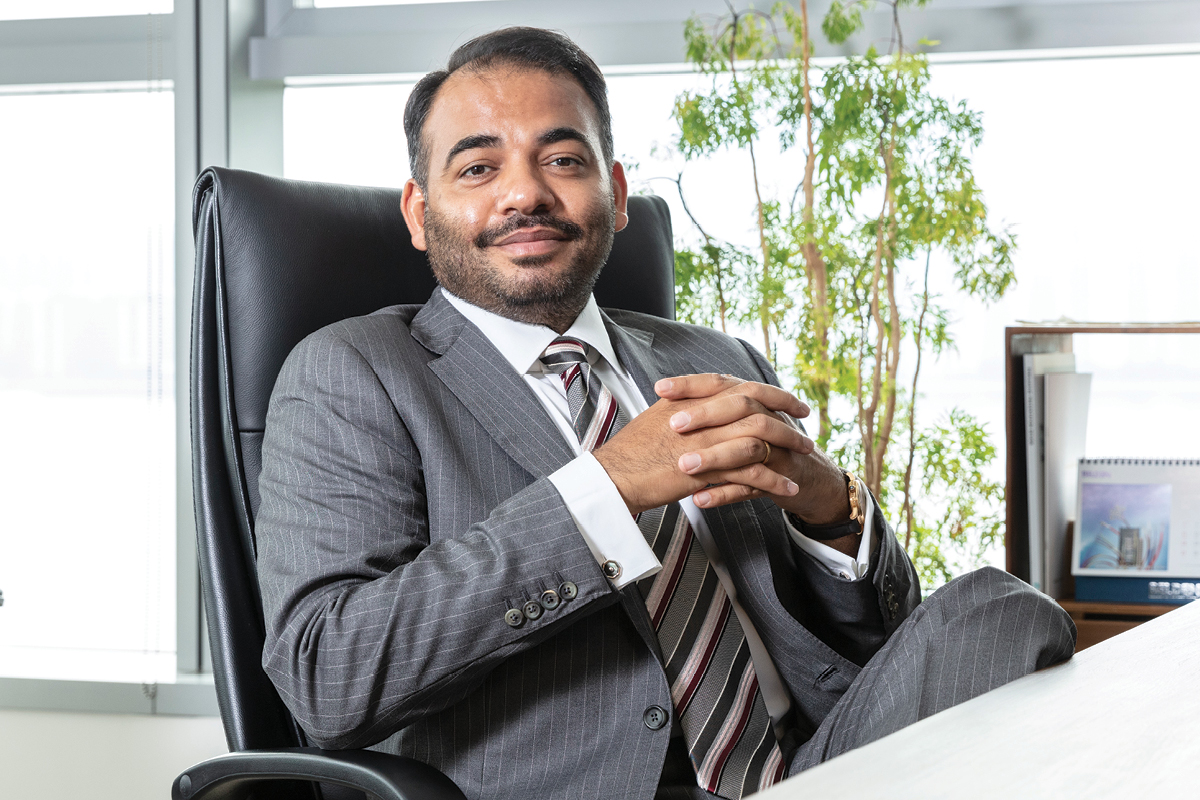The fast-paced modern world would be nothing without connection. Working behind the scenes to seamlessly connect homes, businesses and industries across the globe, Belden is a leader in signal transmission and security solutions for mission-critical applications in enterprise and industrial markets.
With innovative solutions targeted at reliable and secure transmission of rapidly growing amounts of data, audio and video needed for today’s applications, Belden is at the centre of the global transformation to a connected world.

Leveraging more than 117 years of delivering world-class manufacturing solutions, the company’s Asia–Pacific operations, headquartered in Hong Kong, span across the region with offices in China, Japan, South Korea, Australia and Singapore, as well as emerging economies including India and various South-East Asian countries. Belden also has manufacturing capability in North and South America, Europe and Asia–Pacific.
In November 2018, the company opened its newest factory in the Chakan Industrial area in Pune, India, equipped with state-of-the-art equipment and proprietary technology to serve all of Belden’s key markets: industrial, enterprise and broadcast segments.
Since joining the NYSE-listed public company in 2002, Ashish Chand, Belden’s Managing Director for Asia–Pacific, has worn not one, but eight different hats. “I started out in Belden’s Communications Division in Melbourne, Australia, and was then asked to launch the same division in India, where there was massive demand for home telecom services.
However, as the cycle reached maturity, Belden decided to divest their global telecommunication business,” Ashish recalls.
“In this time of transition, we rallied together and established Belden’s Electronics Division in India instead. In no time at all, we found success in India with high technology IT firms establishing new infrastructure and our team was given an influential role in travelling to Belden divisions across the world to share our experiences and train new teams.”
Dabbling in everything from operations, and mergers and acquisitions, to sales, marketing and internal management, in 2009 Ashish transferred to Hong Kong as Vice President OEM Business Development. “This was built on a business Belden had acquired in China in 2007, but it was not as successful as we had initially hoped,” he remembers.
“It was my job to deliver growth by powering the pieces we wanted to keep and divesting the pieces we didn’t. I completed that exercise in 2012 and then took over Belden’s industrial businesses in Asia–Pacific, where I most recently took the helm as Managing Director.”
From strength to strength
Across each of these roles, Ashish describes the one unifying philosophy behind his approach to leadership. “When I look back on every role I’ve been in, I realise that I’ve parachuted into many things, rather than making deliberate moves, and that makes me happy,” he recalls.
“When people ask why I’ve remained with the same company for 17 years, I often joke that I couldn’t find another job. But the reality is that I did find multiple other jobs, and they were all within Belden and each hugely fulfilling. With every role, I picked up something new and for that, I’m grateful.
“Belden’s path, and my own career path now and into the future, has always been centred on using the fundamental strengths and talents of our team and applying them to new domains that are initially scary, but ultimately pay off. We might fail in our first attempt, but we focus on learning more from our failures than from our successes. We must never be afraid to try and fail.”
“When you fail – and you will – you must reflect on it, learn from it, and then carry on.”
According to Ashish, Belden’s Asia–Pacific arm contributes around 20% of the organisation’s annual operational revenue. “As a Belden region we’re smaller than our American and European counterparts, and we’re on a journey here in Asia where we believe that selling application solutions is more successful than simply selling individual products or packages,” Ashish explains.
“For an airport customer, for example, where we would once sell them wireless and security products, we now sell them solutions for their lighting systems, baggage-handling systems and overall communication systems. It’s a much more comprehensive offering that gives far greater value to our customers.”
To encourage this transformation, Ashish is determined to localise the business’s production in Asia. “Four years ago, only 40% of what we sold in Asia was made in Asia. Today, it’s close to 65% and my vision is to bring that up to 90% within the next 2–3 years. This is a crucial move because it means we won’t be highly dependent on supply chains that are out of our control,” he explains.
“The next step in this process is to localise our engineering and development capabilities. We have successfully set up manufacturing locations in China and India, and we must now enrich those locations with enhanced engineering capability so we can conduct essential R&D in Asia.
While there is a lot of talent available in the more developed regions of Asia, there’s little opportunity for that talent to gain experience. Through the benefit of being a global company, our talent has the opportunity to gain skills and experience in our European or US operations, so they can return to Asia and use their learning to create new products.”

An optimistic outlook
Eternally optimistic, Ashish sees endless possibilities for Belden Asia–Pacific as it continues to see significant growth across its local markets. “There are a plethora of infrastructure opportunities in India and parts of South-East Asia with new airports and trade systems, smart grids and automated electricity supply grids. Over the next decade, India is set to grow at a rapid pace as underdeveloped areas begin to catch up to the rest of the world.”
In the more developed regions of North Asia, parts of South-East Asia, Australia and coastal China, Ashish is noticing a distinct shift towards sophisticated automation in manufacturing and infrastructure. With the growth of these markets, he says the challenge is to introduce the right supply chain into the right market.
Belden’s state-of-the-art manufacturing plant in Pune will help Belden further accelerate its production capacity and drastically reduce lead times for customers in India and other countries in the region. “It took just 50 weeks from the date we applied for land from the Indian government to the date we switched on our first machines, so the turnaround was very quick,” he recalls.
He is also very happy that Belden could contribute to the local community around the new factory by providing a compact water treatment plant in a neighbouring village that provides 24,000 litres of purified water daily to meet the needs of almost 900 residents.
The India footprint project was created in line with the Indian Government’s Smart Cities initiative and Make-in-India program to promote digitisation and open an arena of investment opportunities to boost local infrastructure and manufacturing.
Enhancing the customer experience
In 2017, Belden unveiled new customer experience centres (CECs) in Shanghai, China and Bengaluru, India, in addition to existing applications demonstration facilities in major locations across APAC. Showcasing a complete range of its network connectivity and management products, the facilities offer visual and hands-on insights into how Belden innovates to meet customers’ needs by helping them improve efficiency, reduce costs and keep up with more complex and demanding market requirements.
Going for growth
Ashish says his short-term goal for Belden Asia–Pacific is to increase the commercial awareness of the brand beyond its capabilities as a manufacturer. “Everyone knows us, but not as many people buy direct from us. We are hoping to improve brand awareness so that the customer understands the value we can provide and knows to come straight to us.”
Belden’s market share in the Asia–Pacific has been steadily growing but is still in single digits. “My aspiration is to get this well into double digits within five years,” Ashish explains. “The market we’re in is huge and it’s getting bigger each year, so reaching a double-digit market share will mean significant growth for us.
With the breadth of our cutting-edge capabilities and continued high levels of investment for product and manufacturing development driving our promising organic and inorganic growth, I believe we can get there fast.”
“The secret to this success will be in ensuring that we don’t allow processes to get in the way of providing great customer service. Asian customers and markets are very dynamic, so they require a company that’s willing to personalise its processes for the customers, rather than the other way around.”
Putting people first

Ashish explains that there are three core stakeholders that Belden considers before any decision is made or action taken: “Customers, investors and associates. Each year, we measure ourselves on the feedback we receive from these three groups and we create systematic short- and long-term plans for continuous improvement,” he explains.
“I believe Belden is one of few companies that measures and balances these three consequences as consistently as we do and that’s what makes us a unique company to work for, buy from, and invest in.”
In 2007, Belden’s leadership team sat down to articulate a handful of core values that would ripple out to its offices around the world. “The most important of these was, ‘We play to win’. Our leadership is very action and results-focused.
At the same time, we balance that with the fact that, ‘Our customers define our success’. So, we play to win, but never at the cost of our customers,” Ashish notes.
“We also made a commitment to succeed together through teamwork; to invest in and retain talent; to continuously improve and to reach for greatness.”
Belden encourages its people to sort their objectives into two categories: key performance indicators (KPIs) and targets to improve (TTIs). “TTIs are our senior strategic goals and we might not succeed in all of them in the current era. In fact, if we did succeed in all of them, then we haven’t raised the bar high enough,” Ashish admits.
“In Asia–Pacific, we are hitting a 90–95% engagement and retention rate among our staff. However, we need to be smarter when it comes to artificial intelligence and smart technology, and our ability to utilise the millennial generation will be a big part of that.”
When it comes down to it, Ashish believes that Belden’s growth is a direct result of the personal and professional growth of its people. “We have a 1,500-strong team here in Asia–Pacific and despite economic ups and downs, we have sustained these people.
In turn, they have contributed dramatically to our success,” he notes. “This cycle of giving and receiving value is what keeps me going and it excites me to think of what is yet to come.”



